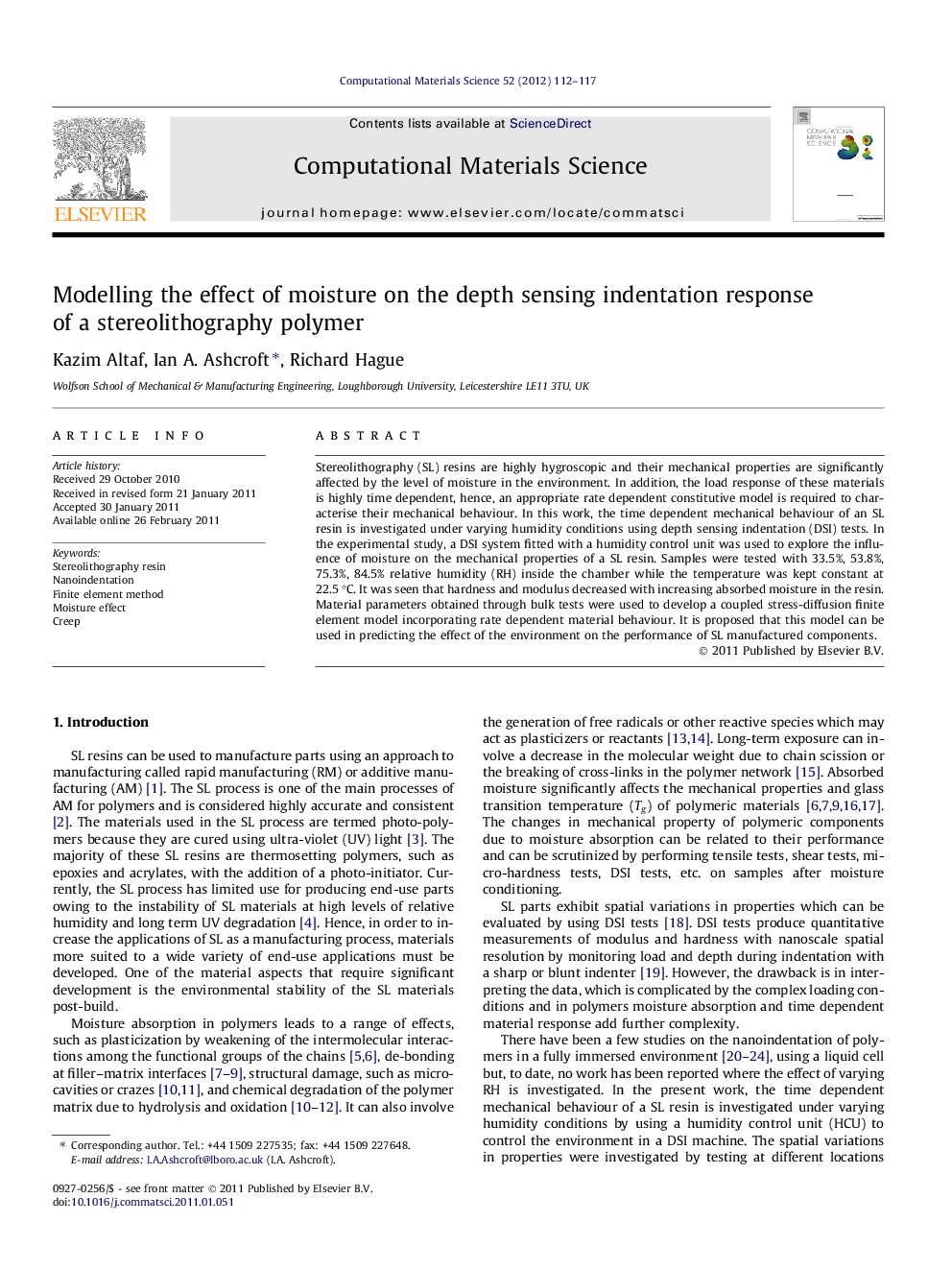| کد مقاله | کد نشریه | سال انتشار | مقاله انگلیسی | نسخه تمام متن |
|---|---|---|---|---|
| 1562057 | 999578 | 2012 | 6 صفحه PDF | دانلود رایگان |

Stereolithography (SL) resins are highly hygroscopic and their mechanical properties are significantly affected by the level of moisture in the environment. In addition, the load response of these materials is highly time dependent, hence, an appropriate rate dependent constitutive model is required to characterise their mechanical behaviour. In this work, the time dependent mechanical behaviour of an SL resin is investigated under varying humidity conditions using depth sensing indentation (DSI) tests. In the experimental study, a DSI system fitted with a humidity control unit was used to explore the influence of moisture on the mechanical properties of a SL resin. Samples were tested with 33.5%, 53.8%, 75.3%, 84.5% relative humidity (RH) inside the chamber while the temperature was kept constant at 22.5 °C. It was seen that hardness and modulus decreased with increasing absorbed moisture in the resin. Material parameters obtained through bulk tests were used to develop a coupled stress-diffusion finite element model incorporating rate dependent material behaviour. It is proposed that this model can be used in predicting the effect of the environment on the performance of SL manufactured components.
Research highlightsViscoplastic finite element modelling of indentations. Experimental investigation of the effect of humidity on depth sensing indentation of polymers. Coupled stress-diffusion finite element modelling of the effect of humidity on indentation. Demonstration of the importance of considering humidity when indenting polymers.
Journal: Computational Materials Science - Volume 52, Issue 1, February 2012, Pages 112–117